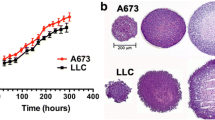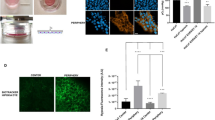Abstract
Analysis of time-lapse cinematographic film permitted the construction of pedigrees from 88 well oxygenated cells of a mouse osteosarcoma (MOS). These cells have been chronically treated with various concentrations of the hypoxic cell sensitizer misonidazole (MIS) over periods of up to 96 h. At concentrations of 0.5 and 7 mM there is a 2--3 h increase in cell-cycle time. Concentrations of 2 mM show an intermitotic time delay of 7.6--10.3 h. At 4 mM cells divided only once. With increasing drug concentration there was an increase in the number of abnormal mitoses. These results were compared with cloning efficiency (PE) experiments. PE at 0.5 mM is 80%, at 1 mM 40 and at 2 mM is reduced to 4%. Cells treated with 2mM MIS over a period of 28.6 h resume their normal cycle when the drug is washed from the culture. This may indicate that DNA is not a major target for MIS. It is concluded that this hypoxic cell sensitizer is also toxic for MOS cells in well oxygenated conditions.
Similar content being viewed by others
Rights and permissions
About this article
Cite this article
Deys, B., Stap, J. Influence of the hypoxic cell sensitizer misonidazole on the proliferation of well-oxygenated cells in vitro during prolonged exposure. Br J Cancer 40, 761–767 (1979). https://doi.org/10.1038/bjc.1979.258
Issue Date:
DOI: https://doi.org/10.1038/bjc.1979.258
- Springer Nature Limited
This article is cited by
-
Morphological changes in rat hepatocytes in primary culture induced by Misonidazole, desmethylmisonidazole and Ro 03-8799
Virchows Archiv B Cell Pathology Including Molecular Pathology (1984)




